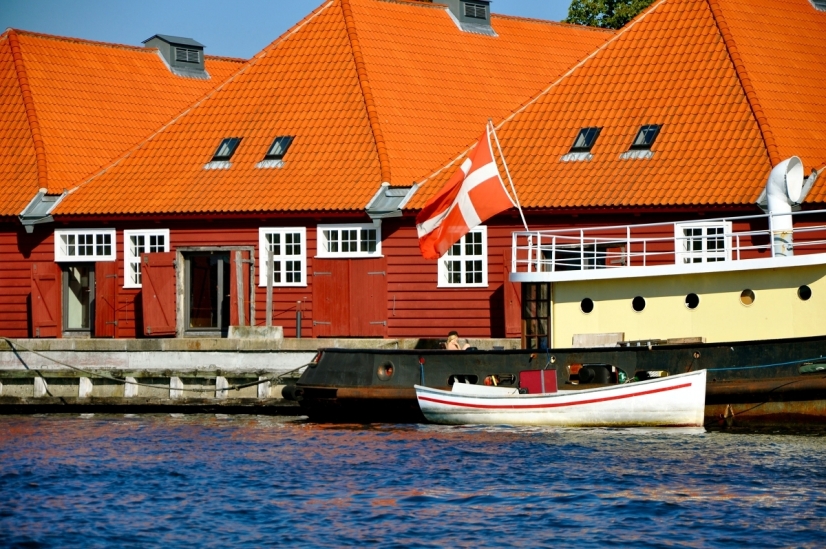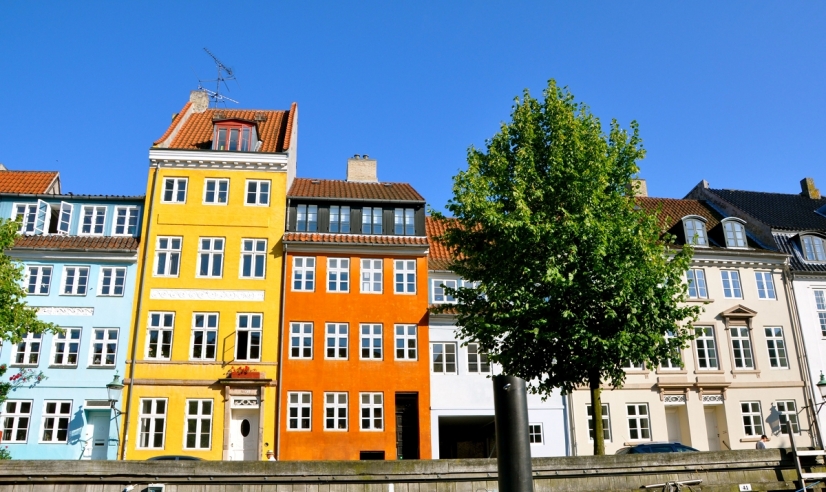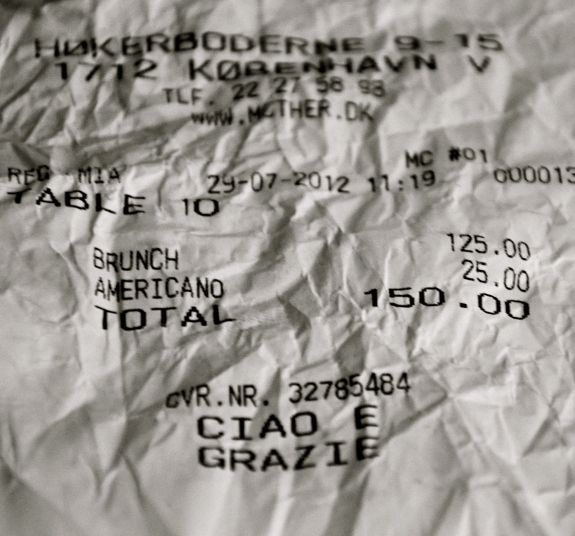 "Breinholt," huffed the guy at the coffee shop as he scrutinized my drivers license, "that's a good German name." Except it's not. It's Danish.
"Breinholt," huffed the guy at the coffee shop as he scrutinized my drivers license, "that's a good German name." Except it's not. It's Danish.
While I'm as much Ukrainian-Welsh-German as I am Danish, there's something about the mythical Nordic nature I've always felt drawn to. Perhaps it's their strength of character. Or their curiosity for exploration. Or maybe it's because somewhere in my dreams I like to imagine myself invincible like a Viking, braving seas and swords to discover new lands. Whatever the case, I approached my pilgrimage to Copenhagen with much anticipation of learning something about my own nature.
There's a uniformity about Denmark that's noticeable immediately. While I couldn't find stats to support it, I'm sure there's more 7-11s per capita in Copenhagen than anywhere else. There's three in the central train station alone, and I'm sure I would have found a fourth had I tried. Curious, I entered one to see if there was something overwhelmingly more wonderful about them than the ones at home. However, I quickly discovered that they actually carried less selection, just rows upon rows of Ritter bars, cigarettes and Faxe Kondi soda.
A stop to Copenhagen's Fisketorvet Shopping Center revealed more of the same. While it advertises over 100 stores, it doesn't tell you that half a dozen of them are H&Ms. The other stores are random retailers with names like, "Feet Me," "Oh My Gosh! Cosmetics," and "Indiana Tex Mex." Most have English names and very little of anything is in Danish. I stopped briefly to buy a $6 coffee that tasted moldy and watch the gaggles of beautiful blonde people pass by carrying their bags of H&M...
In search of something more authentic than chain stores, I ventured to Freetown Christiania. Christiania is a self-proclaimed autonomous neighborhood in the borough of Christianshavn which was started when artists, hippies and other idealistic types overtook abandoned military barracks and their surrounding areas. Among other things, it's famous for its Do-it-Yourself architecture, drug culture and "Pusher Street" where one can freely buy marijuana.
Upon entering, several hand-made signs advertise you are in "Little Amsterdam." Several more signs warn against photography and the impending bad karma that might befall those that don't obey. While I had no desire to have a joint, I ordered a Tuborg at a makeshift bar and had a seat at one of the communal picnic tables in the square. The sun was hot and it smelled strongly of marijuana, beer and school gym lockers. Everyone looked bored and disinterested. A line of tattooed men, some of them missing teeth, lined up at the bar. Fifteen year-old boys with dreadlocks were sitting alone rolling joints. Mangy dogs, some missing a leg, others with a chomped-off ear, were chasing a tattered green tennis ball. Bill Wither's, "Lovely Day" was playing over the loud speaker. I had to leave.
I crossed the street, still in Freetown, to Manefiskeren coffee shop where I bought a $3 Coca-Cola. I overheard a group next to me talking about how Freetown was like a "Little Amsterdam". But to be honest, it could have just as easily been "Little Haight-Ashbury" or "Little Anywhere Else" where people in tie-dye congregate to get high. A group of about 40 British tourists in white sneakers and fanny packs entered the cafe.
Since Freetown had not satisfied my curiosity to find the true spirit of Copenhagen, I decided to check out the design stores in Vesterbro. After all, the Danes are known for design and Vesterbro had been described as, "the hippest, most manifold neighborhood" in all of Copenhagen. It was there that I met the vivacious Ms. Mouschka of aMOUSCHKA and Friends, ethical jewelry store. The store hosts fun and whimsical jewelry designed by Mouschka herself. She was bold, talkative and colorful: I liked her immediately.
According to Mouschka, Copenhagen is unique in that many local designers still have small stores, versus other Scandinavian cities where design is more mass produced. While that is certainly the case for Mouschka, I found most other stores to carry many of the same kitschy items I'd seen in San Francisco: necklaces mass-made in China, scarves from India, handbags from Italy. The dishes at a high-end, neighborhood eatery were stamped "IKEA."
 The best canal view in Copenhagen?Mouschka told me the locals love the canals and water in the summertime, so at her recommendation I went on a canal tour. The thing people won't tell you is that Copenhagen is not a pretty city, even though professional photographers may trick you to believe otherwise. While there is one picturesque canal, much of it is rows of neglected, non-descriptive, four-story brick buildings. The canal tour guide seemed to know this and in her British accent, gave everyone a few minutes preparation for when the "best canal view" was coming up. The tour itself revolved less around the Danes and their history than the number of times the British attacked the city. The most interesting moment was when the tour guide announced, with deadpan delivery, that the iconic "Little Mermaid" statue had had her head cut off twice this year.
The best canal view in Copenhagen?Mouschka told me the locals love the canals and water in the summertime, so at her recommendation I went on a canal tour. The thing people won't tell you is that Copenhagen is not a pretty city, even though professional photographers may trick you to believe otherwise. While there is one picturesque canal, much of it is rows of neglected, non-descriptive, four-story brick buildings. The canal tour guide seemed to know this and in her British accent, gave everyone a few minutes preparation for when the "best canal view" was coming up. The tour itself revolved less around the Danes and their history than the number of times the British attacked the city. The most interesting moment was when the tour guide announced, with deadpan delivery, that the iconic "Little Mermaid" statue had had her head cut off twice this year.
After day three, I felt frustrated. I still could not capture the spirit of the place, nor did I know what was unique or special to the Danes. Had I decided to write a piece called, "Copenhagen, We Treasure 7-11s" I would have had an easier time of it. But that seemed like giving up, so I decided to ask my host Jon. Jon is an electronic music composer in his early thirties with kind eyes and cheekbones that look like they were carved from marble. He seemed flabbergasted that I hadn't been able to put my finger on the pulse of Copenhagen. He argued that Copenhagen had a very unique identity or as he described, "a combination of Stockholm chic with the laid-back vibe of Amsterdam." Hmmmm.
I spent my final day searching for a flea market in the newly hip "meat packing" district. It smelled of sea and dead fish and had remnants of teenage drinking parties. After an hour of unsuccessfully roaming the abandoned warehouses, I decided to give up and have brunch at a place called Mothers. As much as I had wanted to gain insight into identity and home of my ancestors, perhaps it was more important to cultivate an identity of my own. Perhaps the place we come from is not as important as how we shape the place we are...
The ruggedly handsome waiter, who could have been a Viking in a former life, handed me my check and stared at the camera around my neck. "Any good pictures?" he asked. I told him not really and asked where he would recommend. "Norrebro," he said confidently, "it's just like Berlin." Exactly.
Sidebar: It wasn't until I got to Berlin that I realized the bottom of the receipt said...

Perhaps my powers of observation were off in Copenhagen. Tell me about your experiences. Is it important to have a sense of place?